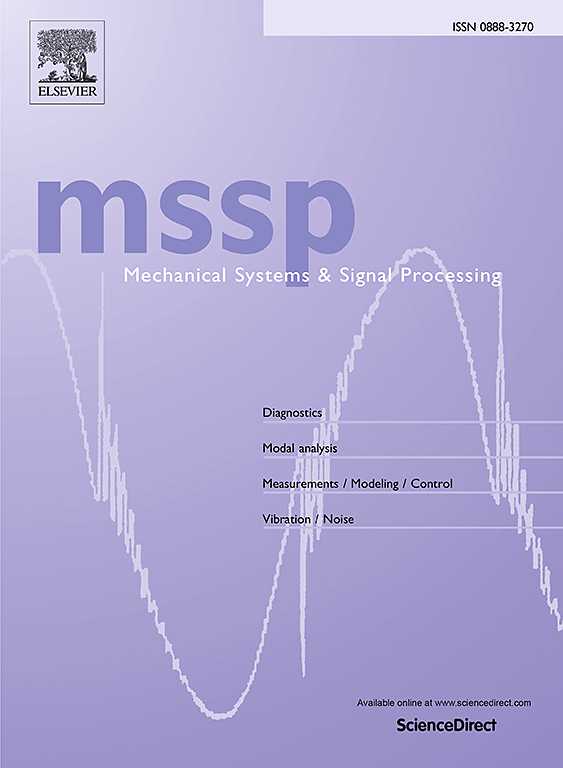The trade-off between structural control and vibration-based energy harvesting: Experimental assessment on a lightweight footbridge
IF 7.9
1区 工程技术
Q1 ENGINEERING, MECHANICAL
引用次数: 0
Abstract
This paper presents a promising trade-off strategy for simultaneous vibration control and energy harvesting in lightweight structures, addressing the increasing need for real-time and autonomous monitoring of actual civil engineering infrastructures. Sensor networks typically require a power supply for data measurement and transmission, which entails significant challenges for structures in remote areas due to battery maintenance issues. This study explores the feasibility of piezoelectric energy harvesting through an experimental campaign involving a controlled fibre-reinforced polymer footbridge equipped with a tuned mass damper. Different configurations are analysed with the aim of evaluating the novel possibility of placing the harvester on the vibration absorber, in order to leverage its relatively high amplitude and harmonic motion. Dynamic loads due to pedestrians include gait frequency variations tests, group of pedestrians and pedestrian streams. Peak response statistics are used to evaluate the harvested energy for the different configurations, highlighting the potential for optimizing energy harvester placement to maximize power output. Also, a feasibility study of the power output of the harvester device to supply energy to sensors is conducted. The methodology, experimental setup, and analysis of different configurations are detailed, with conclusions reinforcing the effectiveness of placing the harvesting device on the control device. This dual-function device concept balances vibration control and energy harvesting, presenting a practical solution for the current paradigm of structural design. This strategy is particularly relevant for footbridges, which often face high-level accelerations and vibration serviceability limit state challenges. The study underscores the potential of this approach to enhance the sustainability and efficiency of monitoring systems for civil engineering infrastructures, demonstrating significant promise for enhancing the performance of piezoelectric harvesters in operational structural vibrations, advancing towards self-powered sensors.
求助全文
约1分钟内获得全文
求助全文
来源期刊

Mechanical Systems and Signal Processing
工程技术-工程:机械
CiteScore
14.80
自引率
13.10%
发文量
1183
审稿时长
5.4 months
期刊介绍:
Journal Name: Mechanical Systems and Signal Processing (MSSP)
Interdisciplinary Focus:
Mechanical, Aerospace, and Civil Engineering
Purpose:Reporting scientific advancements of the highest quality
Arising from new techniques in sensing, instrumentation, signal processing, modelling, and control of dynamic systems
 求助内容:
求助内容: 应助结果提醒方式:
应助结果提醒方式:


